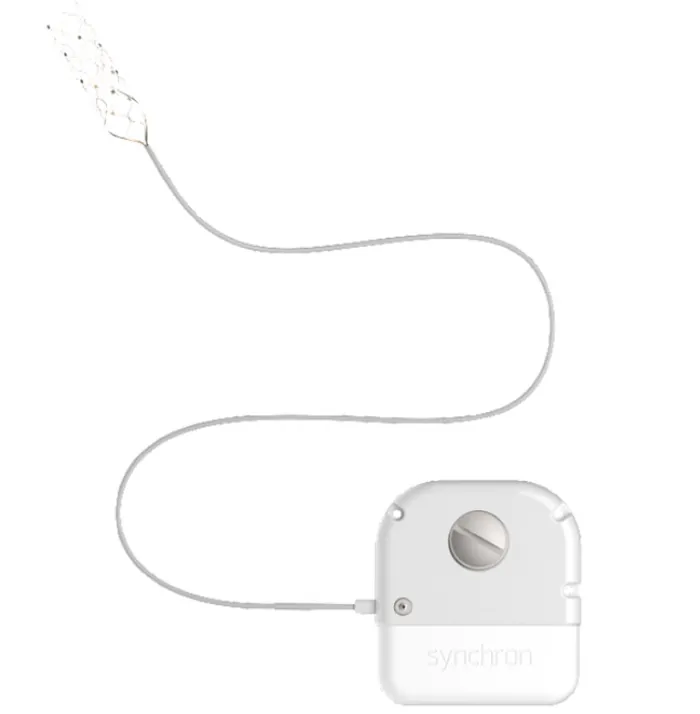A novel brain-computer interface developed by a New York-based company called Synchron was just used to help a paralyzed patient send messages using their Apple device for the very first time. It’s a massive step up in an industry that has increasingly reported progress, which suggests that interfacing our minds with consumer devices could happen a lot sooner than some of us bargained for.
iBrain

Brain-computer devices eavesdrop on brainwaves and convert these into commands. More or less the same neural signals that healthy people use to instruct their muscle fibers to twitch and enact a movement like walking or grasping an object can be used to command a robotic arm or move a cursor on a computer screen. It really is a phenomenal and game-changing piece of technology, with obvious benefits for those who are completely paralyzed and have few if any means of communicating with the outside world.
This type of technology is not exactly new. Scientists have been experimenting with brain-computer interfaces for decades, but it’s been in the last couple of years or so that we’ve actually come to see tremendous progress. Even Elon Musk has jumped on this bandwagon, founding a company called Neuralink with the ultimate goal of developing technology that allows people to transmit and receive information between their brain and a computer wirelessly — essentially connecting the human mind to devices. The idea is for anyone to be able to use this technology, even normal, healthy people, who want to augment their abilities by interfacing with machines. In 2021, Neuralink released a video of a monkey with an implanted Neuralink device playing pong, and the company wants to start clinical trials with humans soon.
But virtually all of these devices, amazing as they may sound, have one major flaw: they require hundreds of tiny electrodes to be implanted directly into multiple areas of the brain. That’s obviously problematic for a number of reasons, and only patients who are desperate and have nothing to lose would typically agree to such an invasive surgery. The risks are not trivial. Scar tissue can build up around the site of surgery, thereby making the implant less effective or even useless, requiring new surgical interventions. There is also a risk of life-threatening complications, both during surgery and in the postoperative period if the materials the sensors are made from are rejected by the immune system, triggering an unpredictable reaction.
The Synchron interface, however, is not implanted directly into the brain. While it requires some surgery, the device is inserted just into the top of the brain’s motor cortex via blood vessels, rather than inserting electrodes straight into neural tissue. This is a much less invasive and safer procedure, one that doesn’t require highly trained neurosurgeons, making it much more affordable. The Synchron implants, which have a mesh-like design and are about the size of a AAA battery, are meant to be permanent and four patients have been using them for more than a year with no adverse effects reported thus far.
The downside is that the device is not as capable of reading complex brainwaves, but it’s good enough. The patient won’t be able to play Pong with it, but they’ll still be able to type simple messages using their mental thoughts.
Semafor’s tech editor Reed Albergotti recently chatted with Rodney Gorham, a retired software salesman from Australia, who is one of six people using the device, known as the Synchron Switch. However, the two didn’t speak and the patient didn’t type using his fingers because he’s suffering from an advanced stage of amyotrophic lateral sclerosis (ALS), a debilitating disease that affects millions across the world. Because ALS affects only motor activity, the disease does not impair a person’s mind, personality, intelligence, or memory. It’s the same condition that the late Stephen Hawking suffered from.
What was particularly exciting about their exchange was that the patient was replying to Reed’s questions on his personal iPhone, whose software interfaced with the Synchron Switch. It’s the first demonstration of this kind that we know of.

This simple text exchange that most of us take for granted is a huge milestone in brain-computer interfacing, one that will become more commonplace in the future. Apple is actively working with Synchron to make iOS more compatible with the technology, speeding up communication and reducing latency.
Threat to privacy?
Synchron’s CEO, Thomas Oxley, dreams of providing millions of such implants a year, a scale similar to the number of stents and cardiac pacemakers implanted annually. That’s at least 15 years away, Oxley estimates.
That’s a lofty goal, but one that isn’t so far-fetched considering the number of people in need of such implants. The number of potential implants may be actually larger if we factor in the potential demand from regular people who have normal motor control but find the idea of directly interfacing with hardware appealing.
It’s not clear how many people would actually be interested in that particular use case, but what’s clearer is that a lot more find the whole idea a bit frightening, imagining some of the dystopian scenarios presented in popular shows like Black Mirror. In an interview with Wired, Oxley says that these concerns are totally overblown.
“What I want the world to understand is that this technology is going to help people,” he says. “There seems to be a theme around the possible negative aspects of this technology or where it might go, but the reality is that people need this technology, and they need it now.”
In any event, the European Union is taking this concern perhaps more seriously than some regulatory bodies in the US. Policymakers in the EU have been working on drafts for regulating computer-brain interfaces for the last five years and currently debating whether a person’s brain waves should be legally considered personal data and health data in the same way their hospital record or private diary are protected.
The Synchron Switch is the only device that the FDA has approved to undergo clinical trials as a permanently implanted brain-computer interface. If all goes well, the company will apply for formal FDA approval, which would make the device available under Medicare insurance.




